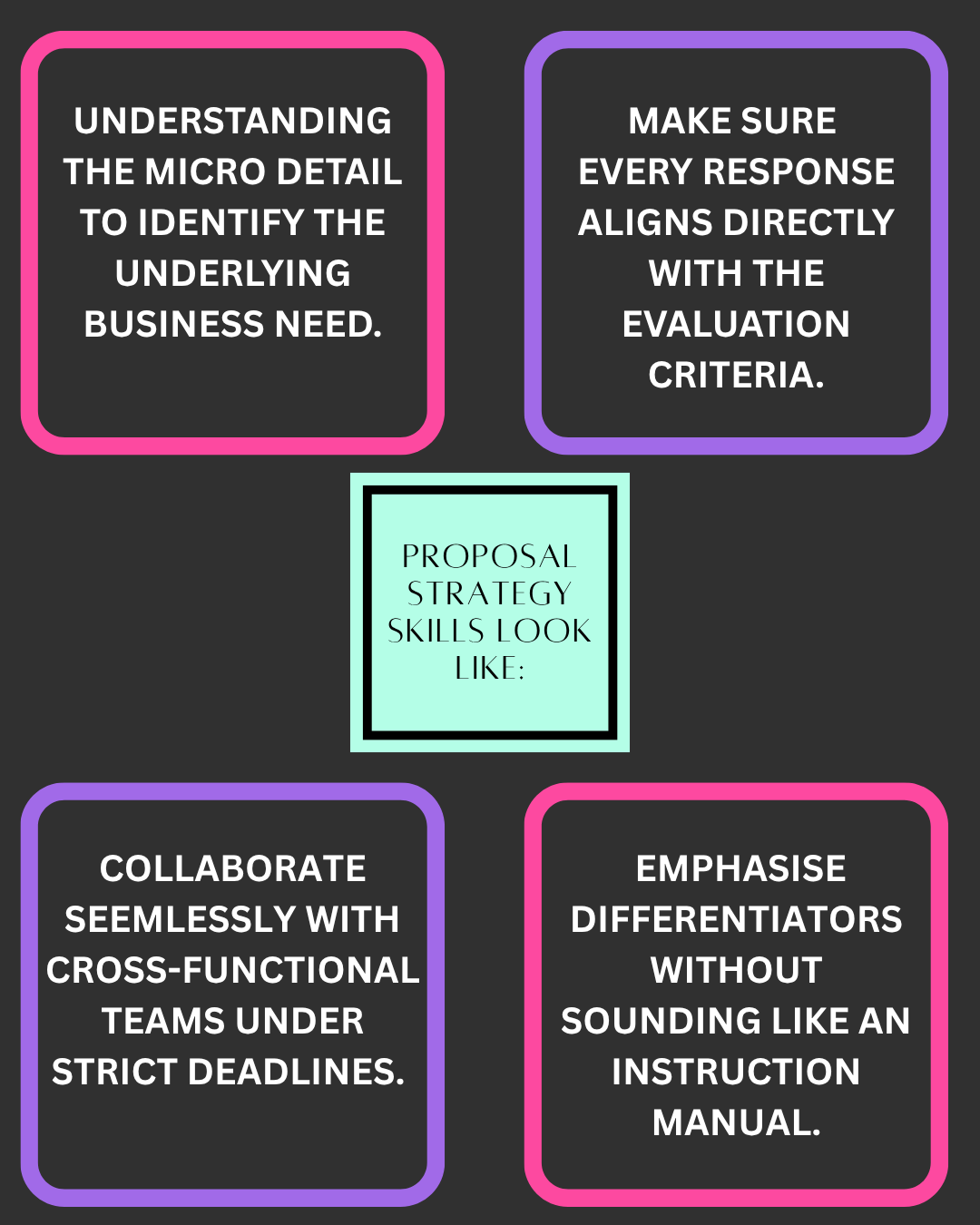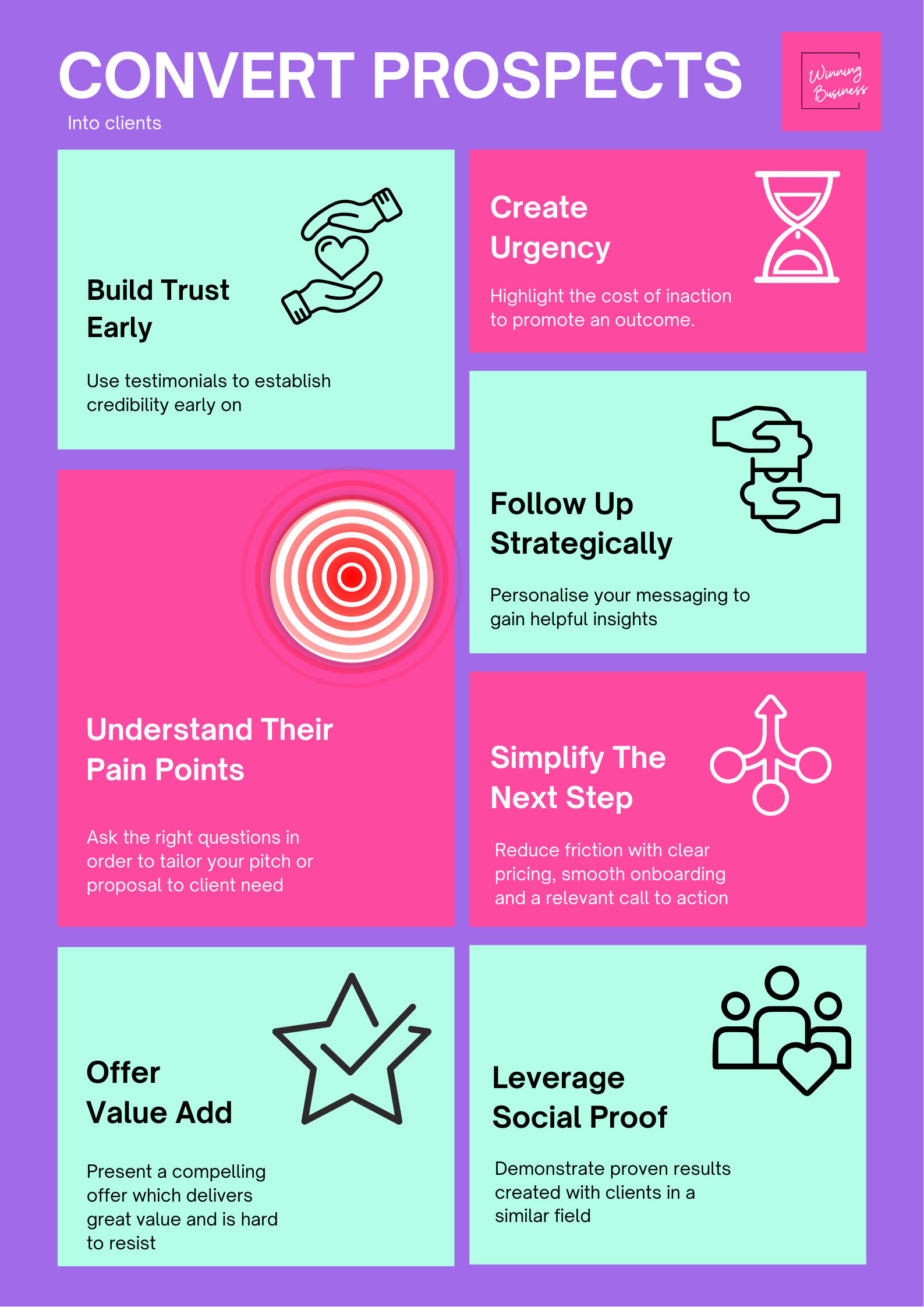BID WINS ON A LOSING STREAK?
The RFP process isn’t a tick box exercise nor has it ever been. Yet many leaders still treat it as such. It is something which is ignored. Treated almost like a task which is being put off. Instead it should be treated as a priority because it represents the highest value of work to be won.
This marketplace is more competitive than ever. So it is so much more than just submitting a document on time. It is about standing out from the crowd. My personal thoughts on this are to always go over and above for your customer, whatever line of sales you are in. Submitting a half hearted proposal will never get you anywhere, if anything it becomes a waste of resource.
Unfortunately, many sales teams don’t have the necessary skills or processes to win in this sector. There are a number of reasons for this. The most obvious being that they lack experience and understanding of what is needed within this process.
Solve The Problem
So often I will read an RFP as part of the review process, and be bored senseless by what I am reading. Too often it will read like an instruction manual. Wall upon wall of text. No white space. No images or diagrams. Just paragraph after paragraph of long boring text, talking about themselves. Often there is not a single reference to the customer! Not one.
The whole point of the proposal in this case is to understand the needs of the customer, and to pitch your skills or experience in relation to that. The client wants to know that you understand their problems but more crucially know how to fix them. The RFP process should always be treated like a strategic conversation rather than a checklist to complete.
Remember: your client is looking for someone they can actually work with, who understands their business and their needs. If you are treating the RFP like a tick box exercise, you have already lost the game. Buyers are looking for partners. The RFP process is long enough without making the job of the review panel even harder. Think about it.
Collaboration Is Key
One area where a business will let itself down is through the lack of leadership and collaboration between departments. When these functions are water tight you will see the best results. The great win rates will always come from a team effort. You need the context and experience of the whole team. A submission just from the sales team often lacks depth and interest.
Competitive Insight
Knowing who your competitors are without being side lined by their presence, is the ultimate goal. Understand the strengths and weaknesses of others can provide an additional insight which can be utilised, to show the unique positives of your own business.
When the sales team lacks competitive intelligence skills, this is almost always an issue. The need to anticipate objections, highlight key differentiators and outrank competitors is a crucial one.
Template Fatigue
Too many sales teams think the answer to a winning RFP is simply to copy & paste. This is never a win! It lacks a lot. Often there are many mistakes, often references to another business. Sometimes it doesn’t matter how many times you check over a document, there will always be something which gets missed. And it can be costly.
The problem with not understanding the specific needs of the client and just creating a generic proposal, is the message it sends. Often it communicates that you don’t care or simply can’t be bothered. This is often the difference between winning or losing an opportunity. The micro language can say a lot.
Business has never been more competitive. So when you apply a lack of effort it becomes very obvious to spot. Modern buyers expect to wooed to some extent or at least for all of the facts to be clearly represented. Making them do the work to understand your offer is never a good idea. When the RFP lacks customised messaging, an understanding of the industry and needs of the audience it is written for; it will not be received well. Many people still believe that the technical detail along with price are the two winning factors, but this is rarely the case. When you fail to communicate your offer, it will still be a no go even when the technical detail is strong. The quality of your response matters and always will.
Poor Communication
I think where sales is concerned, some people still think the “hard sell” works. As if you build a pipeline over night when it really takes years to develop those relationships and the successful outcomes which we are all looking for.
Communication at all levels always needs to be strong. Many sales people excel in speaking whereas proposal folks are great wordsmiths. This is wonderful thing which I have always found in my career — being able to successfully combine both disciplines.
When your sales team attempts to write a complex RFP often it will be:
full of complex jargon or buzz words
elaborate phrasing which fails to get to the point
overly technical explanations
All of this erodes trust and creates friction in the review panel and evaluation process.
Brevity and clarity always win. If your sales team can’t explain your value proposition in plain language, suitable to the readers understanding. Remembering that often the procurement team who review RFP’s largely will have little to no knowledge of your business or sector. So writing as clearly as possible will always be a winning strategy.
Evaluation Criteria Understanding
Too often, the RFP is seen as some kind of admin task, which shows a lack of understanding from the sales team. And with it an under appreciation of how they will be scored. Which ultimately affects how they win or lose business.
There will always be some kind of evaluation score criteria but if your team doesn’t read between the lines, ask clarification questions or understand enough about the customer, it leaves them open to misinterpretation.
The best approach is always to reverse-engineer the responses given to align clearly with the evaluation criteria. This means that the responses correlate with the requirements set. Scoring highly in the more heavily weighted sectors. This way the value offered can be framed in such a way that it makes the work of the team evaluating that much easier.
Top-Down Leadership
Senior team involvement is not optional. It is essential. In order to align all stakeholders, there often has to be involvement from the top. It always helps the team as a whole, especially with a high value RFP. To see that the senior team are leading on it. This improves the level of priority for all. Executives bring credibility, authority and confidence to the table. This can bring the whole team together and often without it there may be issues with collaboration.
Storytelling Matters
Storytelling is part of any form of messaging. The whole point of the RFP is to tell the story of your business whilst combining meeting the needs of the client. In some ways this is a much better platform because you have more creative license than you might in a limited pitch to a client in-person.
Storytelling sets apart winners from losers. The ability to weave your solution into a story which is engaging and interesting whilst clearly providing a solution they are looking for. I always find when you talk from the client’s perspective instead of as a third person, they become more engaged as it talks directly to them. They can’t help but be connected emotionally. This is really the difference between a compelling proposal and a technical manuscript.
Sell with emotion and get results.
RFP Review Strategy
The internal RFP review strategy is realistically more important than the feedback from the client in many respects. We all know where we could do better — with more time, resource or insight. What might we have improved on in an ideal scenario? The idea is to make those improvements to the knowledge bank and bid library before the next opportunity. The RFP process is multi-layered with many variables — learning and improving is a key part of the win strategy.
In addition to this, following up with the client and learning further insights whether it is a win or a loss is crucial to further success. The RFP is an invitation to open the door, the sales win happens in the follow up.
When the sales team lacks the skills to understand complex buying groups, tackle objections, or negotiate based on value — you will still fail to convert into a win. It is import to be successful at all levels.
Feedback Cycles
Most sales teams don’t win because they don’t evolve. They fail to see the RFP process as an entire entity, instead of just a thing which they have to do. Usually there is not a targeted approach to the RFP, and not enough understanding of the feedback whilst is not implemented into the next opportunity. Often there is just a bit of a shoulder shrug, and frustration that they didn’t win this one. This only adds to future problems. And if anything creates a negative feedback loop which only serves to lose rather than win other opportunities.
What Next?
RFP opportunities require high level sales strategy thinking. A business does not win the most lucrative work with minimum effort. The real work in winning starts well before the RFP drops. The most important phase is capture management. If you don’t know who your client is and what they really want, you have already lost. This insight develops the entire proposal — without this you have a very generic document which is rarely a winning one.
A winning strategy involves developing a strategy, persuasive writing, connecting to the client, department collaboration and competitive positioning. To name but a few. If you’re not winning, you’re doing something wrong. The RFP process is competitive but going after the most lucrative contracts always will be. There is no quick fix and a half arsed proposal with none of the above isn’t going to cut it. You have to decide if you are serious about winning this type of work, otherwise the results will never come.



